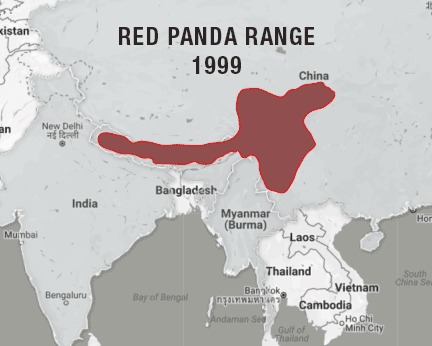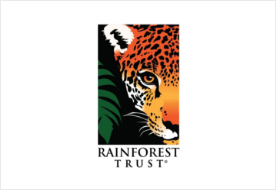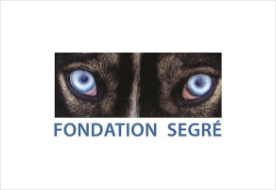Rapid human population growth in the Eastern Himalayas is causing deforestation and the degradation and fragmentation of red panda habitat. In Nepal, 70 percent of red panda habitat lies outside of protected areas and is fragmented into 400 small forest patches.
Habitat is being fragmented by development projects including roads, hydro-projects, electric transmission lines, and mining, as well as settlement and agricultural conversions, and anthropogenic forest fires.

Livestock herding is a major driver of red panda habitat destruction. Herders cut down trees to maintain sheds and collect fuelwood from the forest. Unsustainable herding practices degrade habitat quality as livestock graze in the forest and eat and trample bamboo and other red panda food species. An increasing trend toward dairies in red panda range has fueled the demand for fodder (bamboo) and firewood.
Free-roaming dogs and disease are major contributors to red panda mortality. Herders in red panda range have dogs that protect their livestock from potential predators. They also kill red pandas.
Dogs can also spread seven species of gastrointestinal parasites to red pandas. The canine distemper virus, which is highly infectious and always fatal to red pandas, is another threat from free-roaming dogs. Get more information below on how we are protecting red pandas from dogs.
Poaching and the illegal trade of red pandas is on the rise and harming already vulnerable populations.
Red panda diet is 98% bamboo. The life cycle of these plants is mass flowering followed by die-off. Bamboo does not easily re-establish in disturbed areas and becomes difficult to find in fragmented forest. Red pandas become vulnerable to other threats when crossing unsuitable habitat in search of it.
Climate change is causing more frequent droughts, snow falls, and floods, all resulting in shifting vegetation zones in the Himalayas.
These threats are compounded by:
Inadequate staffing and pay of rangers and enforcement agencies in Protected Areas and Community Forests, combined with difficult terrain and inaccessibility of red panda habitat, ensures minimal protection from poaching and habitat destruction. This is augmented by complicated geopolitics among red panda range countries.
Many people living in red panda habitat are not aware of red pandas or their importance to the Himalayan broadleaf forest ecoregion.
Learn how we are raising red panda awareness in Nepal.
Leads to increased dependence on forest exploitation to meet basic needs.
Learn how we are conserving red pandas through livelihood improvement programs.



